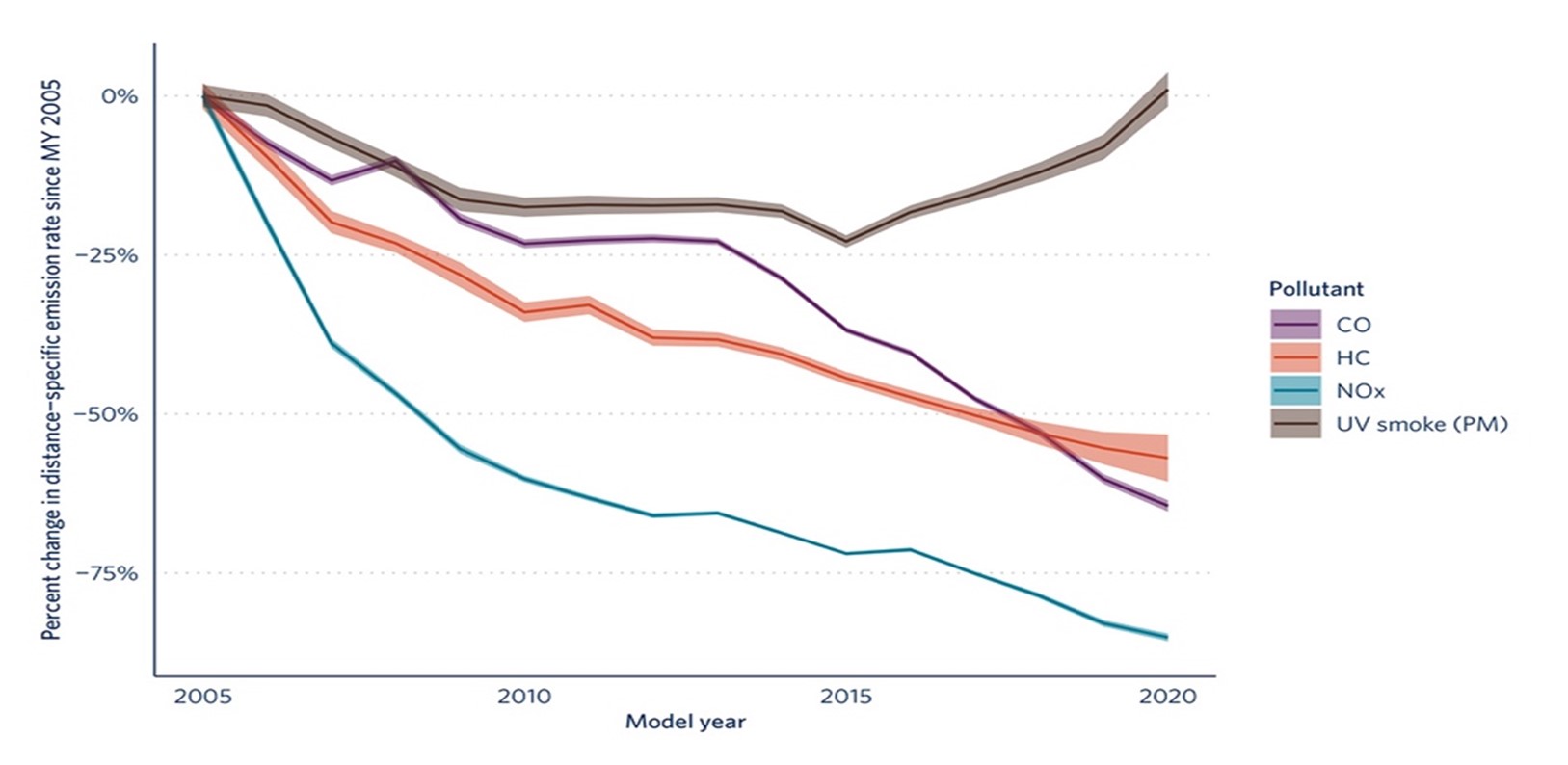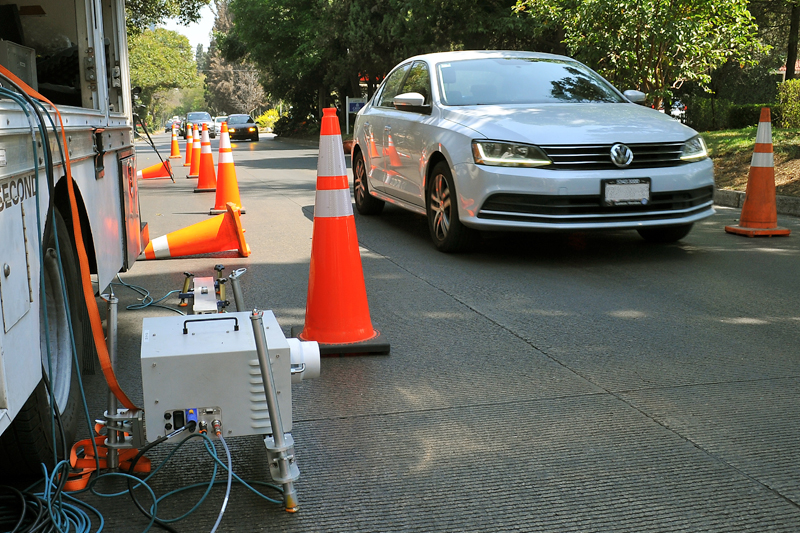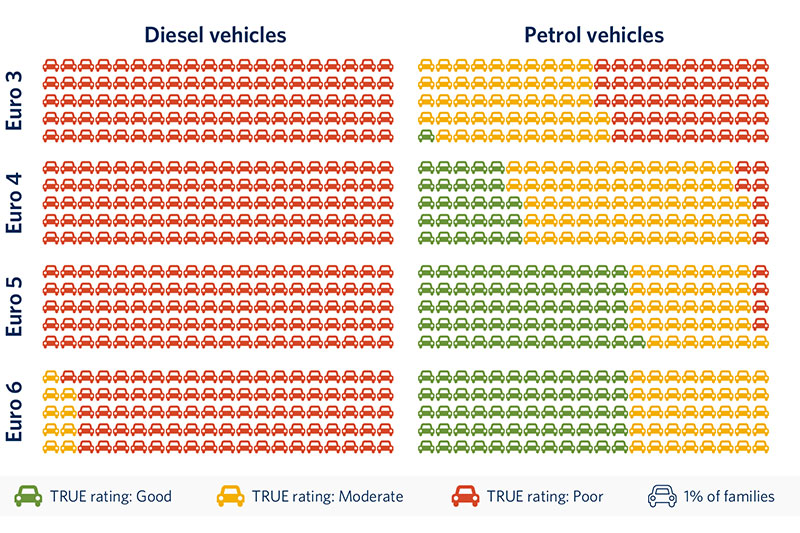US EPA finalizes light-duty emission standards and lowers PM limits, supported by TRUE analysis

Newly finalized U.S. light-duty emission standards include a lower PM limit, helping to address the rising PM emissions found in TRUE analysis.
Earlier this spring, the United States Environmental Protection Agency (EPA) announced their finalized multi-pollutant emission standards for light- and medium-duty vehicles, covering model years (MY) 2027–2032. These standards will require substantial reductions in greenhouse gas emissions among the fleet, which will have a major impact in accelerating the transition to zero-emission vehicles. The standards also introduce lower pollutant limits, which will help address air pollution from remaining combustion engine vehicles in the coming years.
One key feature of the finalized emission standards is the reduction in the particulate matter (PM) limit from 3 mg/mile and 6 mg/mile, for different test cycles, to 0.5 mg/mile for all test cycles. PM vehicle emissions contribute substantially to air pollution, leading to adverse health impacts including premature death. The EPA suggests that this lower limit will require the installation of gasoline particulate filters, which have been adopted in major vehicle markets like the European Union and China. This change will help to greatly reduce PM emissions, including ultrafine particulate emissions, and help address the associated environmental health hazards.
The International Council on Clean Transportation (ICCT), a TRUE technical partner, submitted comments to the EPA in support of the proposed PM standard in 2023, highlighting results from a previous TRUE Initiative study that showed a rise in PM emissions across gasoline light-duty vehicles and trucks. In this study, the analysis of 18.8 million remote sensing measurements showed that while tailpipe emissions including carbon monoxide (CO), hydrocarbons (HC), and nitrogen oxides (NOx) trended downward, ultraviolet (UV) smoke, a proxy for PM, increased from MY 2015–2020.
This trend is largely a result of the uptake in gasoline direct injection technology. Compared to CO, HC, and NOx, which show a 66%–86% decrease from 2005 to 2020, the UV smoke average of MY 2020 vehicles is similar to that of MY 2005 vehicles. In their response to the ICCT’s comments, the EPA mentioned this TRUE report as evidence supporting the need for the revised PM limits.
The new standard is projected to lead to major reductions in PM emissions and is estimated to prevent up to 2,550 annual premature deaths by 2055 along with reducing respiratory and cardiovascular disease. These health benefits are especially important for communities located near heavily trafficked roadways that are currently exposed to elevated levels of air pollution.
“We are very excited to see our TRUE Initiative analysis cited by the United States EPA as a key justification for enacting tighter regulations of vehicle particulate matter emissions. This is exactly the impact which we want TRUE to have - supporting standards such as these and thereby addressing the urgent public health crisis of air pollution,” said Sheila Watson, FIA Foundation Deputy Director.







